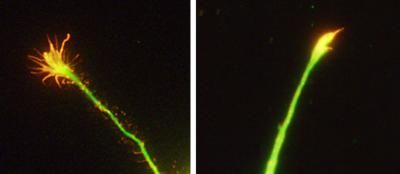New study helps explain how botulism-causing toxin can enter circulation
New research in the Journal of Cell biology helps explain how the toxic protein responsible for botulism can enter circulation from the digestive system.
Botulism, a rare but serious paralytic illness, is caused by botulinum neurotoxin (BoNT), an extremely toxic protein that is produced by the bacterium Clostridium botulinum. In food-borne botulism, the nontoxic components of BoNT — including hemagglutinin (HA) — protect the toxin from the low pH and enzymes encountered in the digestive tract. BoNT then passes through the intestinal epithelial barrier to enter circulation from the gut.
Although studies have examined how BoNT crosses the intestinal epithelial barrier, the mechanism by which it accomplishes this feat has remained a mystery. In this study, a team of Japanese researchers led by Yukako Fujinaga shows that HA plays a role. HA binds epithelial cadherin (E-cadherin), disrupting E-cadherin–mediated cell-to-cell adhesion and thereby disrupting the epithelial barrier.
Interestingly, the research demonstrates a species-specific interaction between HA and E-cadherin. Although HA binds human, bovine, and mouse E-cadherin, for instance, it does not bind rat or chicken.
Other news from the department science

Get the life science industry in your inbox
By submitting this form you agree that LUMITOS AG will send you the newsletter(s) selected above by email. Your data will not be passed on to third parties. Your data will be stored and processed in accordance with our data protection regulations. LUMITOS may contact you by email for the purpose of advertising or market and opinion surveys. You can revoke your consent at any time without giving reasons to LUMITOS AG, Ernst-Augustin-Str. 2, 12489 Berlin, Germany or by e-mail at revoke@lumitos.com with effect for the future. In addition, each email contains a link to unsubscribe from the corresponding newsletter.




















































